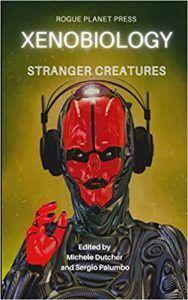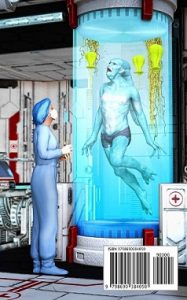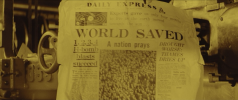
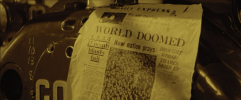
© Val Guest Productions / Pax Films / British Lion Films
One my favourite British science-fiction movies is The Day the Earth Caught Fire (1961), starring Edward Judd, Janet Munro and Leo McKern, directed by Val Guest and scripted by Guest and Wolf Mankowitz. (The underrated Guest made three other movies, 1955’s The Quatermass Experiment, 1957’s Quatermass II and 1960’s Hell is a City, that I also like a lot.)
The Day the Earth Caught Fire is an apocalyptic tale wherein the USA and the Soviet Union carry out simultaneous nuclear-bomb tests at the earth’s poles and, subsequently, the planet experiences weird meteorological events. Rivers dry up in some places and rain falls in unexpected torrents in others. The general trend, though, is that temperatures rise. The film’s heroes – a pair of London-based journalists – discover that those nuclear tests have disrupted the earth’s nutation, its axis of rotation. Our planet is now spiralling closer and closer to the sun and in a few months’ time will plunge into it.
Yes, the film’s science is wonky. A full-force hurricane has a heat-release every 20 minutes that’s similar to one 10-megaton nuclear bomb going off, so a few such nuclear explosions are nowhere near enough to knock the earth out of its orbit. Also, what’s amusing about the film from a 2024 viewpoint is that its journalist heroes work for the Daily Express – a newspaper now so moon-howlingly rubbish it makes the Daily Mail look comparatively sane and reasonable. Today, while the Thames evaporated, the Express would be denouncing the earth-knocked-out-of-orbit / crashing-into-the-sun scenario as a woke hoax and politically-correct fearmongering.
However, as a dystopian sci-fi movie showing a gradually-unfolding catastrophe through the eyes of some ordinary people who are powerless to do anything about it, The Day the Earth Caught Fire is both affecting and chilling.
The film ends ambiguously. The world’s governments make a last-ditch attempt to reverse the damage, exploding more nuclear bombs in the desperate hope they’ll nudge the earth back into its proper orbit. Meanwhile, in the Daily Express’s offices in now-utterly-sweltering London, we see that two versions of the next day’s front page have been prepared. One bears the headline WORLD SAVED, the other the headline WORLD DOOMED. And we leave the film’s characters there, not knowing their fate.
I’ve been thinking about the ending of The Day the Earth Caught Fire a lot today. November 5th, 2024, is when Americans go to the polls to elect a new president. That will either be Kamala Harris or Donald Trump. The latter was once memorably and accurately described by the New Yorker writer Mark Singer as someone whose existence is ‘unmolested by the rumbling of a soul’. A few years ago, less eloquently, I called him ‘that rancid man-slug of evil.’
Trump has been open about what he’ll do to the USA if he’s re-elected president. He’ll transform the world’s most powerful country from a democracy into an authoritarian state, with him as despot-in-chief. Even if the American public are stricken with buyers’ remorse after voting him in, he’ll change the election laws and fiddle the constitution so that they can’t ever get rid of him and his far-right Republican successors (who’ll no doubt be led by the repulsive J.D. Vance). The Trump Reich will be here to stay.
Along the way, he’ll also embolden other fascists in other countries around the world, hand over Ukraine to his buddy, hero and idol Vladimir Putin and allow Putin’s malignant influence to extend right into Europe, make American women second-class citizens with zero control over their bodies, persecute LGBT people and probably erase trans ones, put the lunatic anti-vaxxer Robert F. Kennedy in charge of American health policy and appoint Elon Musk as his Joseph Goebbels-style head of propaganda who’ll pump out misinformation and hate on Twitter (or ‘X’ as Musk calls his debased platform these days). Science will be derided, suppressed and defunded. Pig-ignorance will be lauded, promoted and revelled in.
Worst of all, Trump, a climate-change denialist, will add billions of tonnes of US carbon emissions to the earth’s atmosphere, probably thwarting any last chances of humanity doing anything to mitigate the effects of the climate catastrophe. Yes, the earth really will be catching fire, if slightly more slowly than it did in Guest’s movie.
So, world saved or world doomed? We’ll find out a little later this week.
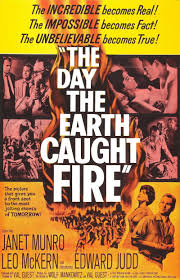
© Val Guest Productions / Pax Films / British Lion Films

